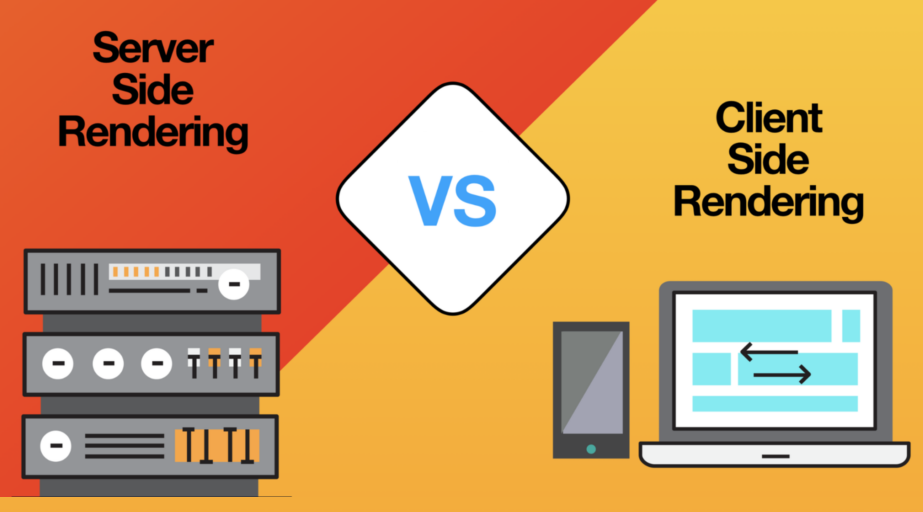Search Engine Optimization (SEO) benefits greatly from Server Side Rendering (SSR), as it generates complete HTML pages on the server and delivers them to the browser. Conversely, Client Side Rendering (CSR) relies on JavaScript to load content, which can hinder search engine indexing and slow initial page loads. Because SSR provides fully-rendered pages ready for indexing and quicker load times, it often offers superior SEO advantages.
Key Takeaways:
- SSR enhances SEO by delivering fully-rendered HTML to search engines, improving indexing and rankings.
- CSR can complicate indexing and slow down initial page loads but offers better interactivity and user experience.
- Your choice between SSR and CSR should depend on your website’s needs: SSR is ideal for faster loading and SEO, while CSR excels for dynamic, interactive sites with frequent updates.
In the rapidly evolving field of web development, rendering methods significantly impact a website’s performance and user experience. Two prominent rendering techniques, server-side (SSR) and client-side (CSR), cater to different requirements. Understanding their differences can help you choose the best fit for your website. This post explores how SSR and CSR work, their pros and cons, and which method aligns with your business goals.
What Is Server-Side Rendering (SSR) and How Does It Work?
Server-Side Rendering (SSR) creates web pages on the server before sending them to the browser. This approach minimizes client-side processing and ensures search engines can efficiently index content, resulting in better rankings. SSR is particularly effective for SEO-focused websites and those where fast page loading is critical.
How SSR Works:
- The user enters a URL in the browser.
- The server processes the request and sends a pre-rendered HTML page to the browser.
- The browser renders the page and downloads JavaScript files for interactivity.
- The page becomes fully interactive once JavaScript execution is complete.
What Is Client-Side Rendering (CSR) and How Does It Work?
Client-Side Rendering (CSR) is a newer method where JavaScript renders content directly in the browser. The server initially sends an HTML document containing JavaScript files, which the browser executes to generate content dynamically. While CSR offers fast subsequent page loads and dynamic updates, the initial load can be slower, and SEO optimization requires extra effort.
How CSR Works:
- The user enters a URL in the browser.
- The server responds with static HTML and JavaScript files.
- The browser downloads these files and starts rendering the page.
- Dynamic content is displayed once JavaScript finishes executing.
- Subsequent interactions are quicker, relying on JavaScript rather than server requests.
Key Differences Between Server-Side and Client-Side Rendering
| Feature | Server-Side Rendering (SSR) | Client-Side Rendering (CSR) |
| Purpose | Generates dynamic content on the server. | Renders interactive content in the browser. |
| Accessibility | Accesses server-side files and databases. | Relies on browser resources without server connections. |
| Execution | Processed on the server, resulting in longer response time. | Processed in the browser for faster execution. |
| Security | Higher security as server-side code is hidden. | Lower security as scripts are accessible in the browser. |
| SEO Performance | Pre-rendered HTML improves indexing. | JavaScript dependence requires extra SEO measures. |
Which is Better for SEO?
Both SSR and CSR have unique strengths and weaknesses. Your choice should depend on your website’s goals and requirements.
Advantages of SSR for SEO:
- Faster Initial Page Load: Essential for a positive user experience.
- Better Crawlability: Pre-rendered content simplifies search engine indexing.
- Ideal for Static Content: Ensures consistent website performance.
Limitations of SSR:
- Limited support for third-party JavaScript (e.g., reviews, recommendations).
- Delayed updates for dynamic content.
Advantages of CSR for SEO:
- Dynamic Content: Ideal for interactive, frequently updated websites.
- Improved Interactivity: Single-page applications enhance user engagement.
- Optimized Server Resources: Distributes rendering processes to the client.
Limitations of CSR:
- Slower initial load times due to JavaScript execution.
- Requires additional steps (e.g., pre-rendering) for SEO optimization.
Does Rendering Choice Impact Google Rankings?
Google uses JavaScript SEO strategies to optimize indexing for heavily coded websites. However, SSR remains the preferred choice for SEO due to its ability to provide fully-rendered HTML, which search engines can index more easily.
| SEO Factor | Server-Side Rendering (SSR) | Client-Side Rendering (CSR) |
| Indexing | HTML content is readily indexable. | Requires dynamic rendering for indexing. |
| Page Load Speed | Faster initial load times. | Slower initial loads; faster subsequent interactions. |
| Mobile-Friendliness | Consistent HTML delivery ensures responsiveness. | Needs careful optimization for mobile usability. |
| JavaScript Dependency | Minimal; content is easily indexable without JavaScript. | High; SEO depends on proper JavaScript handling. |
| Dynamic Content | Supports dynamic content generation. | Needs pre-rendering for effective indexing. |
Optimize Your Site for Better Performance
Choosing between SSR and CSR depends on your website’s objectives:
- Opt for SSR to prioritize SEO, faster page loads, and consistent performance.
- Choose CSR for dynamic, interactive applications that update frequently and reduce server loads.
Carefully weigh the pros and cons of both methods to select the best rendering strategy for your business goals.

